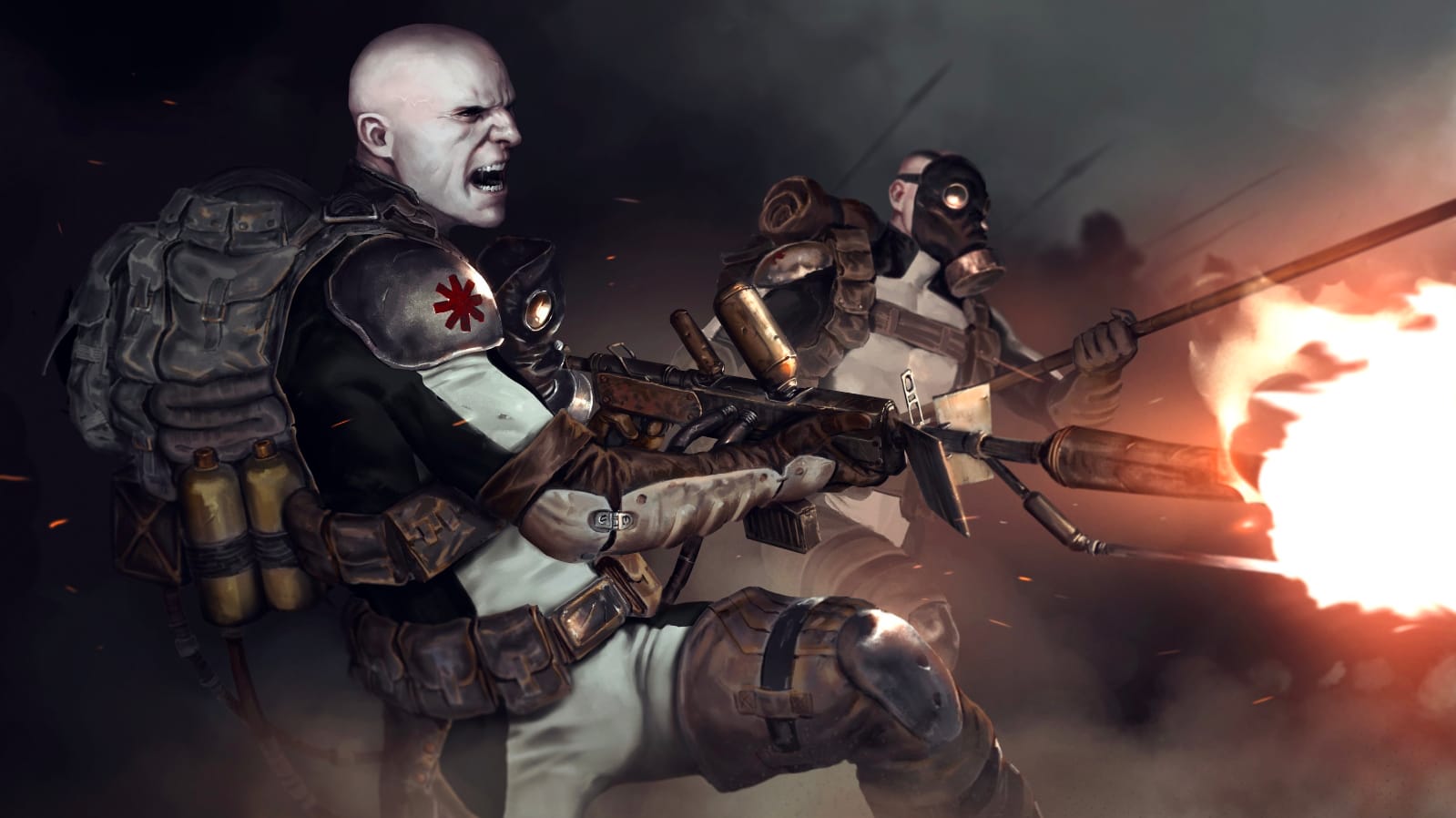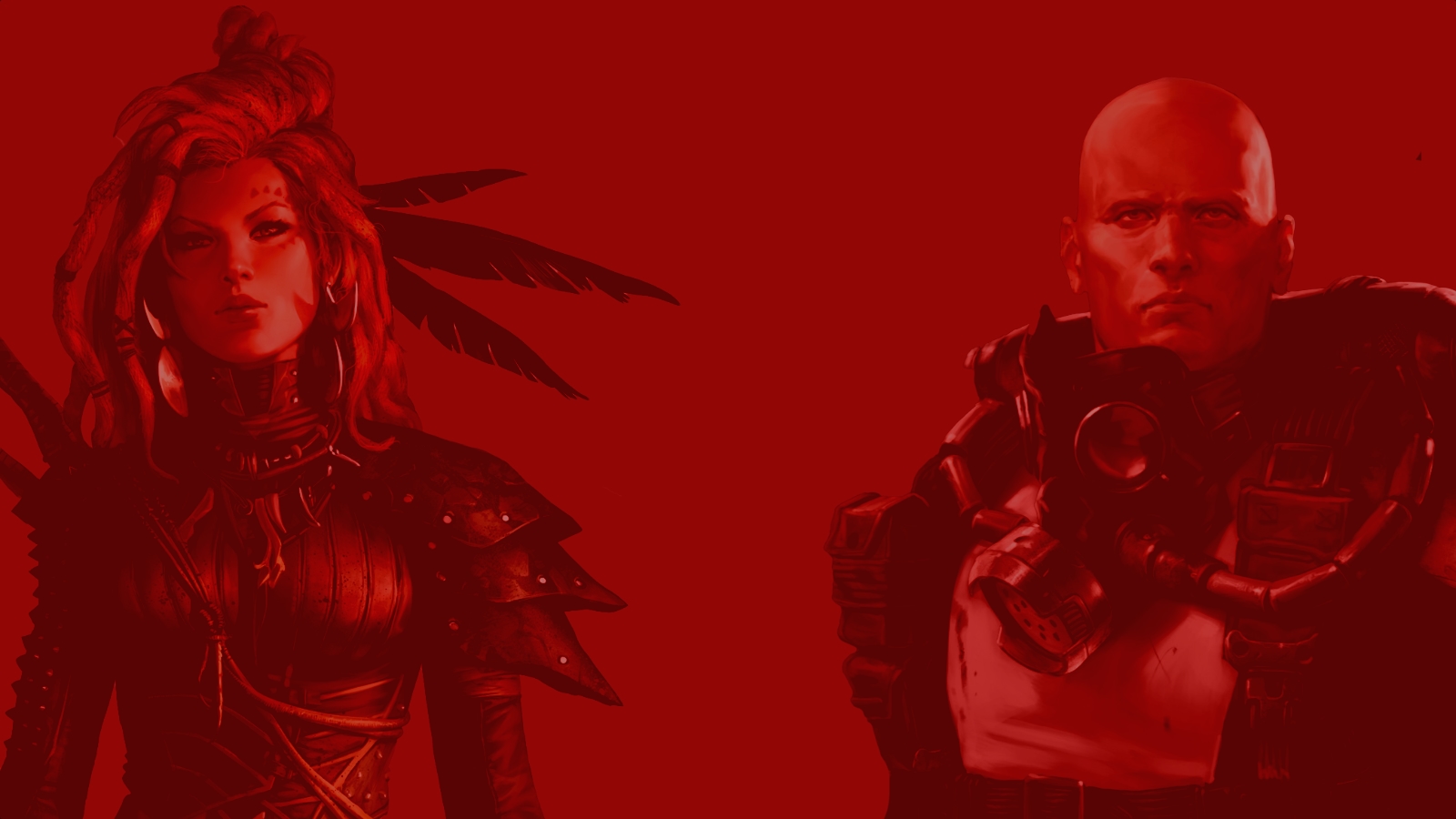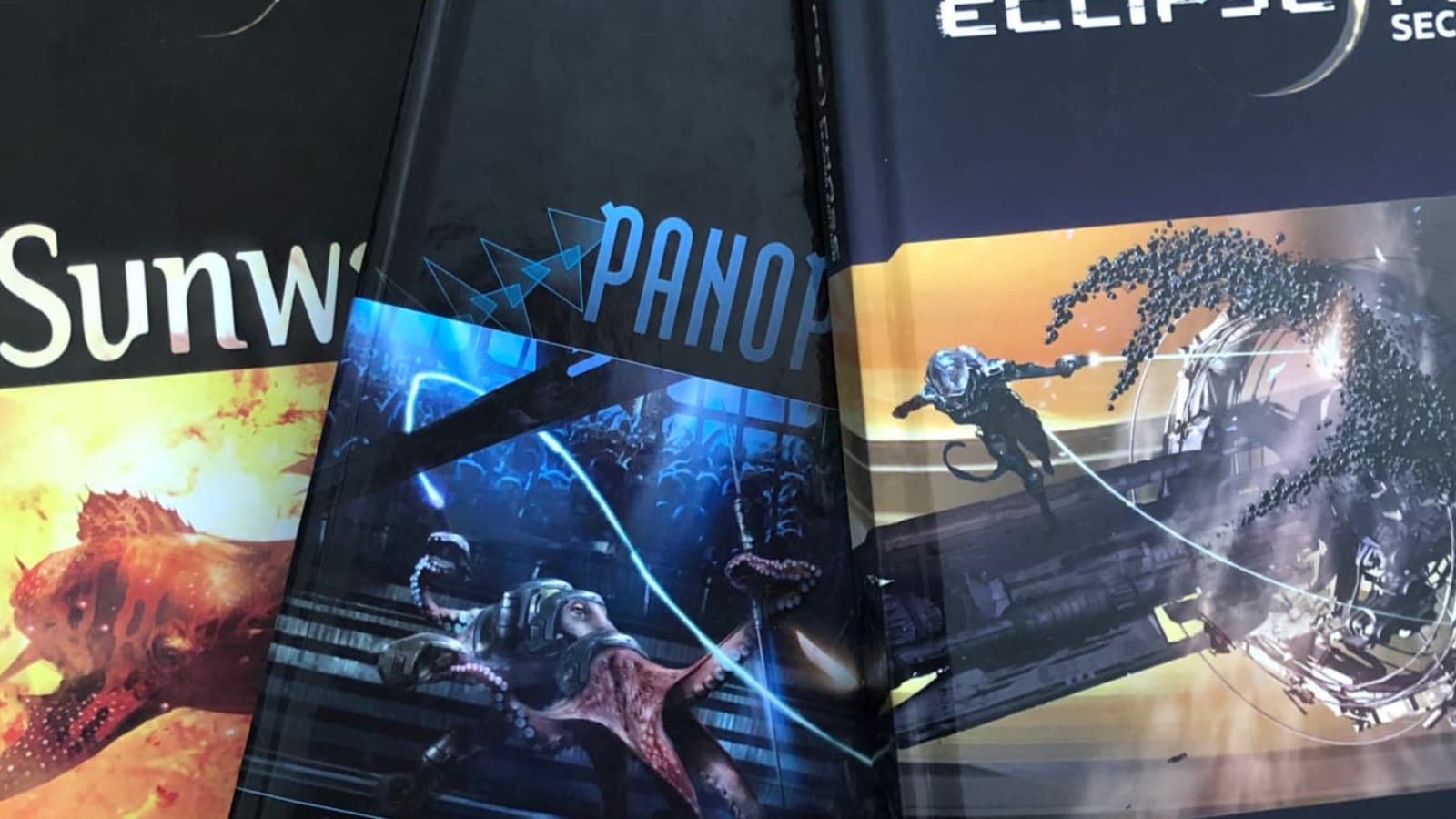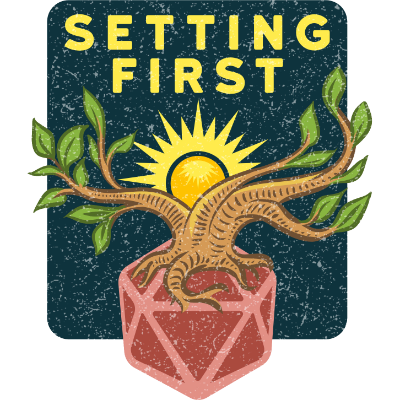
What does a player character do when they have to choose between what is right and what is expected of them?
This appeared originally as a YouTube video, but in an effort to be evenhanded, I’m providing the transcript here, so you can either read the post below or watch it in video form.
Another bullet, fired from the shore, rips the air just over Armani’s head as he works on the patient. His comrades, Lucas and Roch, return fire. All three are kneeling in a flat boat on a swampy river at the ass end of nowhere. They’re surrounded by burlap bags filled with Burn cusps. Burn is an addictive substance that turns people into foul psychonauts. Burn is the scourge of humanity.
Armani hates Burn. As a member of this Spitalian order, he’s pledged his life to eradicating it, to saving humanity. Yet here he is, trying frantically to keep an Apocalyptic Burn dealer from dying. He presses down hard on her stomach with his left hand, blood oozing between his fingers, while his right fumbles through his field bag. Finally, he grasps a sterile dressing, tears the wax paper wrapping with his teeth. His hand moves aside, revealing burbling crimson. He presses the dressing to it. He’s not sure if she’ll survive. He’s not sure any of them will survive.
How did he wind up here, fighting to save an Apocalyptic, a woman who doesn’t believe the world is worth saving, someone who distributes that evil Burn and profits off it, a woman who, in any other circumstance, he’d probably already have killed for her sins? How did Armani and his friends wind up in this perilous, bizarre, and thrilling-for-the-players situation? Well, before we get to that, let’s talk about choices.
A central tenet of Setting First play is that the GM should give player characters difficult choices. I’m not talking about “fight the Broos or sneak past the Walktapus?” discussions, but about moral quandaries and ethical conundrums. I picked this up from The Burning Wheel, and I could spend a whole video explaining how “Fight for what you believe” is one of the game’s central pillars and how it’s reinforced mechanically. But for now, I’ll just say, if you’re unfamiliar with Burning Wheel, read it. You don’t have to love it or play it to get a lot out of it.
A second tenet of Setting First play is that the setting should always be helping the GM drive conflict. One way to combine those two drivers is to explore the theme of conflict between individuals and the groups to which they belong. Those groups could be anything from extended families to religious congregations, trade groups, military units, crime syndicates, magical disciplines, political factions, ethnic groups, or nation-states. Even PCs that fancy themselves rugged individuals who reject their society have a relationship to that society.
So, how does this all work in practice? First, as always, if you’re thinking of incorporating a theme into your campaign, everyone needs to buy into it. Exploring the theme of the individual versus the collective means that player characters will need to have defined beliefs. This doesn’t mean they need lengthy backstories, but it’s important that the player and GM know what motivates a given PC.
For example, up front, the player running Armani in our Degenesis campaign establishes that the character is intensely loyal to Roch and Lucas, who are like brothers to him. He also loves and would do anything for his sister, Giovanna, who ran away from home as a teenager. Finally, he sees Burn as an evil pestilence and, as a member of the Spitalian cult, devotes his body and soul to fighting its spread. As the GM, I know what motivates Armani, and I’m out to test his beliefs, preferably by pitting two or more of them against each other. The player doesn’t know what tests are coming, and I don’t have a predetermined outcome in mind when I throw them at Armani.
Also, and this is really important, players won’t be punished for making any particular choices in keeping with their character beliefs. There may be negative in-game results, because sometimes making the right choice means walking a hard path, but the GM isn’t there to judge a player’s fidelity to the character’s beliefs. The whole idea is to find out what happens when PCs are confronted with choices that offer no easy way out.
So, getting back to Armani—as the character is being created, I suggest that his sister ran away as a teenager. I don’t know what I’ll do with that, but I know I’ll be able to use her later. He loves and would do anything for her. I keep that in my back pocket. And many sessions into the campaign, after the PCs have seen the negative effects of Burn firsthand and have had several run-ins with Burn-dealing Apocalyptics, I have Giovanna surface. Brother and sister are reunited, but it’s obvious by her Apocalyptic tattoos and his Spitalian uniform that the two of them are on opposite sides of a war. They are both delirious with joy at seeing each other, but they are quickly sucked into a heated argument about freedom versus duty, adherence to a moral code versus obeying no dictate other than hedonism.

In the end, Giovanna asks for the help of Armani and his friends so that she can pull off the theft of some Burn from a rival band of Apocalyptics. She swears this will be the last haul. She’s tired of always looking over her shoulder, tired of watching out for the long arm of Spitalian retribution. She’ll settle down. She’ll stop being part of the problem. All Armani has to do is go against everything the Spitalian order stands for, go against the organization that has clothed and fed him, taught him so much, given him the opportunity to make something of himself, all while engaging him in the only fight that matters: the fight to save humanity.
Oh, and if he gets caught helping an Apocalyptic traffic Burn, he’ll be executed summarily, no judge or jury required. If he refuses to help his sister and casts her aside, the risks to him won’t be as dire, but he’ll lose one of the most important people in his life again. And of course, if he treats her the way he’d treat any other Burn dealer, by hauling her to court for justice or worse, he may face opprobrium from his comrades and eventually the remains of his family.
This sets the stakes rather high, no matter what he does, but the decision is Armani’s. We’re all playing to find out what happens.
Some settings abound with hooks the GM can use to test the relationships between individuals and the collective. In particular, settings that provide a wealth of competing ideologies rather than just kings and queens playing for power tend to work well for exploring this theme. Armani’s dilemma came out of a long-running Degenesis campaign. One of the reasons I enjoy Degenesis so much is that the setting is very much about how, as humanity has slowly recovered from an apocalypse, everyone can’t agree on whether or how to confront an existential threat. It provides so many hooks for players and GMs who want to explore this theme of the individual versus the collective. In our campaign, I hit all three PCs, and Armani in particular, with these sorts of dilemmas several times. It led to some of the most intense, rewarding sessions I’ve ever run.

Eclipse Phase, about which I’ve also made a video that is linked to in the show notes, provides fertile ground for campaigns exploring this theme. There are many different ideologically motivated groups that player characters could belong to and many ways to test the limits of that belonging. I haven’t discussed how to apply this theme of the individual versus the collective to NPCs, but it works equally well there. If I as the GM know what beliefs motivate an NPC and the PCs pit two of those beliefs against each other, what will happen? Sometimes there’s nothing more rewarding for players than to see their characters affecting their opponents or even allies in ways that transcend the usual “role to persuade” forms of interaction.
Have you ever created moments that focus on the individual versus the collective in your campaign? What game did you use? How did it play out for your group? Let me and other readers know in the Setting First Discord.
Ω

